

Experience
3.0
What behavioural science says about how to augment your customers’ reality
CONTENTS
p1 Executive summary
p2 Things are changing, fast
p3 What is Web3?
p 4 An enormous opportunity
p 5 A powerful tool
p 6 Rewriting the rules
p8 What we did

p 9 You must set the ‘STAGE’
p10 S is for Self
p14 T is for Transformative
p18 A is for Accessible
p22 G is for Gamified p26 E is for Extraordinary
p30 What matters most?
p33 References
Foreword

by James Wallman
CEO, World Experience Organization; Executive Committee member, Experience Research Society; author, Stuffocation (Penguin, 2015), Time And How To Spend It (Penguin, 2019)
To be clear: I don’t fully understand what Web3 is, and I don’t think all the answers are in this - very good - report.
But I do know that Web3 means digital, virtual, here, there, and everywhere all at once and it’s going to change our lives and entertainment and how brands engage with people.
And I also think what we need isn’t so much answers, but to ask the right questions, and then probe for answers.
At the birth of this magical everything-may-bepossible brave new virtual world, what we need are pioneers scouting ahead, probing for the future.
And that’s exactly what this insightful whitepaper delivers. Like its real-world cousin, the excellent MARVELS report that blended behaviour psychology with IRL experience design, this whitepaper does exactly what a good report should do.
Built on science, it’s robust.
Based on new research, expert opinion and academic studies, it explores the key tenets of what works in Web3. I’d say ‘campaign’ but as the report makes clear, the Web3 world is far less ‘us telling you’ and more ‘us and you playing together’.
This new unchartered world of Web3 needs rails, guidelines, a shared reality we can gather around to agree, disagree, discuss.
The social psychology phenomenon ‘The Generation Effect’, shows that content is more engaging and memorable when it involves some kind of interaction and puzzle-solving.
So it is no surprise to see gamification feature as one of the five levers to drive success; a topic explored in books, like my own ‘Time And How To Spend It’, and Natasha Dow Schull’s ‘Addiction By Design’.
Within these pages lies a roadmap to help navigate this next evolution of experience...
And here the report really delivers, delving into ideas, and giving you concepts to play with, and creative currency to trade. A few instances:
• Does this new experience you’re building offer an “NPC state of unthinking bliss”?
• Does your experience give people the chance to play with their identity? (Which is also a key theme in the upcoming WXO whitepaper ‘The State Of The Experience Economy: the Future Of Experiences 2025-35’.)
• Is this an ‘oceanic experience’, where your ego can dissolve and disappear?
Whilst gamification certainly impacts key KPIs like time on device (TOD) and repeat visits, careful consideration should be given to how to use it ethically and responsibly as much as how to do it well.
Within these pages lies a roadmap to help navigate this next evolution of experience, and I encourage you to dive into this whitepaper with an open mind and a willingness to challenge conventional thinking.
The possibilities of Web3 are incredibly exciting. This report sets out a framework for approaching these new immersive technologies in ways that enable you to explore – and win.
Executive summary
The world is changing so quickly that our brains simply can’t keep up. Generative AI, virtual reality headsets, cryptocurrencies… The wheel of the Fourth Industrial Revolution is spinning at 1,000rpm.

This cluster of technologies is known collectively as Web3 - immersive, interactive, democratised platforms that put users at the centre. It is an evolution from Web2, and a paradigm shift towards more dynamic, creative and converged experiences, that blur the line across physical, digital and virtual realities.
The opportunity for brands is enormous: leanforward engagement, hyper-personalisation, and unlimited potential for new brand expression. Yet this is not just another element of the omnichannel mix; it is an entirely new way of thinking, a fundamental shift in the relationship between brands and consumers, and it has to be done right.
To identify the ingredients that make Web3 activations a success, we conducted a piece of behavioural science-informed research, involving eight expert interviews, over thirty peer-reviewed papers, and a quantitative survey of 550 British adults. The result?
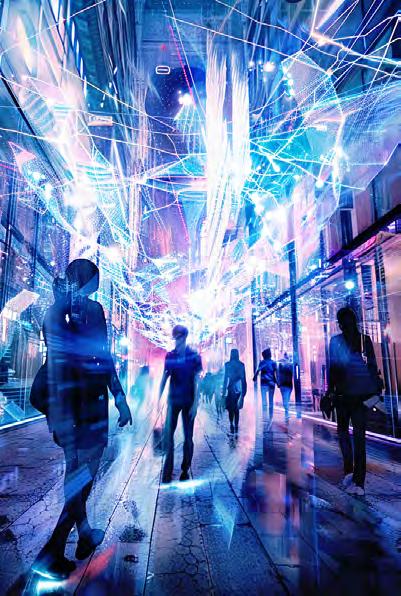
Brands must set the STAGE not run the show:
Focus on the Self and allow users to be creative and express themselves
Have a Transformative effect on users and their relationship with you
Make the experience Accessible, inclusive and high-quality for all
Be playful and engaging in this uniquely social, Gamified and interactive space
Incorporate Extraordinary elements impossible in the physical world.
Things are changing, fast
Technology is evolving at an astonishing rate. Famously, Moore’s Law says that computing power roughly doubles every two years.
A law which has been amazingly consistent: academics in 1998 predicted computers would be almost the intelligence of a human by now. What this means is that technology is growing exponentially – from an almost flat line to a suddenly steep curve.
To paraphrase Ernest Hemingway, these technological changes will happen very slowly, and then all at once. We may already be in the ‘all at once’ stage.
Elon Musk recently predicted that AI will be smarter than the smartest human by 2025, and smarter than the collective intelligence of all human beings by 2029 – a forward revision of other experts in the field. In just the last few months alone, we’ve seen the mind-bending potential of Sora’s generative AI for video, bringing to life anything that can be imagined; we’ve seen Apple’s Vision Pro headset start to blend the physical and virtual worlds in day-to-day life; we’ve seen Bitcoin reach an all-time high as citizens worldwide redefine what value means and how it is stored. And that is barely touching the surface.
These technologies, together, present an opportunity not just to provide consumers with more immersive experiences, but to fundamentally shape and define reality. This is the explosive power of Web3.

Years by which $1000 of computation will equal the capacity of... The Kurzweil Curve
Years by which $1000 of computation will equal the capacity of... Computer Performance
Bell Calculator Model I
Univac I Apple Mac II
Computer Type
What is Web3?
One of the most consistent themes of Web3 is, perhaps, that there is not yet one consistent theme. Appropriate, considering borderless fluidity and constant evolution is part of its DNA.
Academics agree that it is challenging to wade through the buzzwords and reach a clear definition of Web3, as ubiquitous and powerful as it may be. Typically, Web3 has been viewed as a broad range of applications for blockchain technology, like cryptocurrencies, NFTs, and the Metaverse, ultimately decentralising the internet. With the inclusion of metaverses, and by extension augmented and virtual reality, Web3 incorporates a continuous network of shared interactive environments. As a 2007 prediction put it, the internet would become “an all-encompassing digital playground where people will be immersed in an always-on flood of digital information, whether wandering through physical spaces or diving into virtual worlds”.

The experts we spoke to told us the Web3 is an evolution of existing technologies; more immersive, interactive, and democratised, allowing for a more meaningful exchange of value between brands and their audiences.
“It’s really an acceleration of many things that we’ve seen happening into a more immersive, richer and ideally a more democratised opportunity.”
Charlotte Bunyan
“It’s moving people to interact virtually in spaces rather than looking at pages. Fundamentally that leads you to start thinking about different kinds of interface, where connection could become more meaningful.”
Mark Lycett
“It’s a galaxy of various different planets that include AI, NFTs, digital collectibles, gaming, digital twins, all of these various ecosystems, this whole continuum of capabilities that able you to interact and yet choose your interaction.”
Sasha Wallinger
“In most general terms, it’s the ability to own the data and the artistry or creativity that you put out. It’s having ownership.”
Olivia Lee
“It’s the next evolutionary step in the relationship between a brand and its customers. It’s more one-on-one, particularly with the potential for it to be tokenised or remunerated on an individual basis. It’s the shift of this concept of value exchange.”
Will Jeffery
An enormous opportunity
Web3 is a huge commercial opportunity. Academic research has consistently shown that this cluster of technologies is more entertaining, inspirational and helpful than more traditional approaches, leading to enhanced evaluations of both the message and the brand, resulting in higher purchase intentions.
They grab more attention and evoke more curiosity. Being realistic and fluid results in an enhanced flow state etc. Tangible outcomes are as various as building awareness, improving brand perceptions, reaching new or niche audiences, and generating revenue in both the digital and physical worlds. As one paper put it, “Try to spell the word marketing without AR – it won’t work.”
... leading to enhanced evaluations of both the message and the brand ...
“For brands, these virtual environments present huge opportunities, not only do some of them host large communities, Roblox for example has 71.5 millions DAU; but more importantly users are keen to engage with brands for a longer period, as it is immersive and when done properly brands can provide huge value to the end user.”
Albane Prioux

“There’s the digital permanence aspect versus an IRL experience. When you go to one of the big venues, like a concert, there’s no way for you to really experience that again, apart from that really awful Instagram video that you took and got in the way of someone behind you. Whereas the virtual experiences you can keep, the virtual goods that you’ve earned you can keep. A lot of the experiences will be evergreen.”
Joe Hills
“There’s infinite possibility. Not simply just in selling product but in connecting with audiences. It can build allegiance similar to a sporting team or a fashion influencer which signals to a new generation of consumers that this brand is relevant, this brand is listening and this brand is cutting edge.”
Sasha Wallinger
“Things that were once science fiction can become real, they can become something that you actually experienced and that limitlessness is incredible really. What does that enable a brand to do in terms of its brand storytelling? I think that should be hugely exciting for brands.”
Charlotte Bunyan
“It’s been described before as the ultimate lean forward medium. With virtual reality, I mean, there is no escape. Once you’ve got the headset on, your eyes can’t look anywhere else unless you shut them. You’re going to see that content. If you put the headset on, then you are really immersed in that content and you’re really giving your time and your attention to it. So, it’s very, very powerful.”
Henry Stuart
A powerful tool
Immersive technologies are more persuasive.
Compared to other media, like 2D video or text, immersive technology can have a bigger impact on attitudes and behaviours, as shown in the meta-analysis.

Across many studies, VR interventions had a bigger impact on people than less immersive experimental conditions.
For example, another study found that people who viewed a VR advert, as opposed to a 2D one, had significantly higher purchase intentions for the brand; another study found that, compared to a picture of a beach, a VR experience of a beach lead to more desire for beer and soda.

Distribution of Effect Sizes
Rewriting the rules
Web3 is an entirely new medium, requiring an entirely new approach from brands.
Old rulebooks are being rewritten
“It’s a completely new way of communicating. It’s a little bit like the same shift where we used to have print ad campaigns, and then social media. If you were to take that same asset and put it on social media, people didn’t resonate because it was not the language of those platforms.”
Will Jeffery
“It’s part of the evolution of any new channel or medium, as it was with TikTok, you’re needing to think about this in a different way. You need to create content that feels very native to that platform and work with the creators and the community that exists already.”
Charlotte Bunyan


Web3 is not about creating campaigns.
It’s an entirely new strategy.
“What’s required is much more integrated thinking. It’s incorporating this thinking into the whole way in which you’re going to build and communicate your brand. It’s more to do with your vision and mission than it is to do with your marketing or sales or promotions. It’s about who we are and who this brand is.”
Will Jeffery




You set the STAGE...



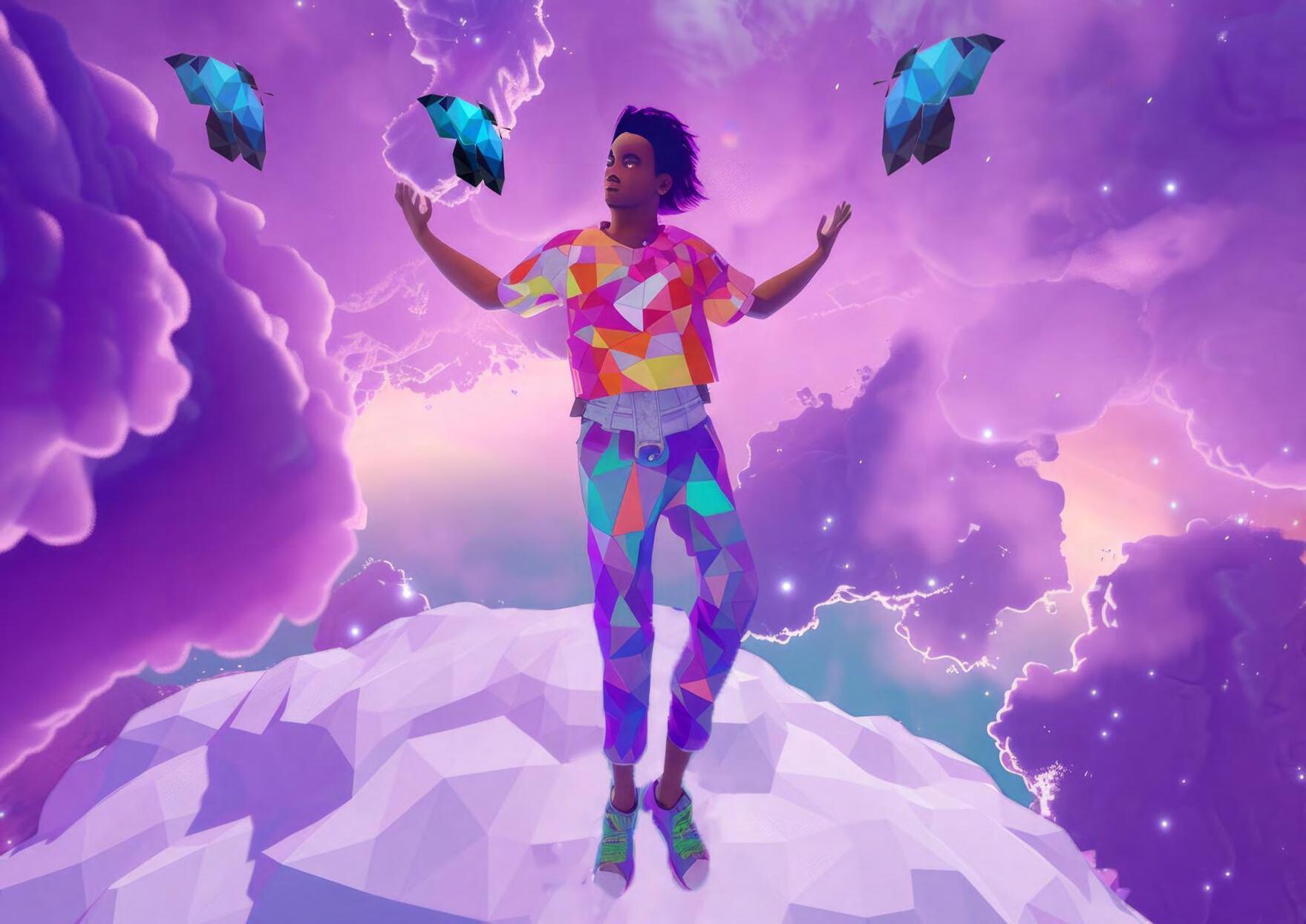
What we did
We set out to reveal the secret ingredients for successful Web3 activation. Namely, what are the levers a brand needs to pull to make a Web3 experience that works?
To this end, we conducted a rigorous piece of research, informed by behavioural science.
Expert interviews
We conducted eight expert interviews in Web3, gaming, AR, and the Metaverse.
Albane Prioux
Insights and Partnerships
Director at GEEIQ, the metaverse data navigation platform
Charlotte Bunyan
Managing Director at Arq, the lab for immersive virtual and augmented spaces
Henry Stuart Co-Founder and CEO at VISUALISE, the immersive content production studio
Joe Hills
Marketing Producer at Supercell, the mobile game development company

Mark Lycett
Professor of Digital Innovation at Royal Holloway, University of London; and Head of Business
Futures, CoSTAR National Lab for R&D in creative technology
Olivia Lee
Co-Founder at LIVVIUM, the Web3 and metaverse transformation consultancy
Sasha Wallinger
CMO, Innovation & Foresight
Strategist, and Founder in fashion, technology and sustainability
Will Jeffery
NED, Consultant and Producer for games marketing, creative agencies and media businesses
Literature Review
We read over 30 peer-reviewed papers and industry white papers on the same topics.
Quantitative Survey
From this, we created a list of 100 statements that could apply to Web3 experiences, built into a 15-minute online survey.
These were tested with a qualitycontrolled sample of 550 British adults, who described a Web3 marketing experience from the last year, selecting from 8 types (e.g., NFT, Metaverse, AR).
The data was subjected to factor analyses, ultimately finding five factors that define a Web3 experience.

You must set the ‘STAGE’
We identified five behavioural science-based levers for effective Web3 activation.
Self Accessible Gamified Extraordinary Transformative
Web3 puts the individual front-and-centre and gives them ownership. It’s often personalised, and it gives people the opportunity to experiment with their identity and be creative.
Web experiences can be inspiring and meaningful, resulting sometimes in a life change, or just interacting with the brand in a new way or seeing it in a new light.
Web3 opens experiences to everyone, provided it is inclusive and non-toxic. It also enables brands to go above and beyond in terms of providing quality and surpassing expectations.
Web3 offers a unique space for interaction and gamification. It is typically highly social, fulfilling needs like achievement, competition and bonding. And sometimes, it’s just a bit playful.
Web3 can transport people into an entirely new world, full of surprise, wonder and delight, where they can experience things they would otherwise never.


This all about ‘me, me, me’. Web3 experiences have a unique ability to put the consumer at the centre and to be highly personalised and refined to niche preferences.
Self“ It was all about me personally”
“ It was highly personalised”
“ I improved upon myself (e.g., looks or style)”
“ I could use my imagination to make things”
“ It really involved me, personally”
Web3 experiences also allow people to play with their identity and express creativity, to feel in control, and to have a sense of ownership.
Sometimes, they might get something truly valuable to keep out of the experience. This concords with industry white papers, which have described these kinds of technologies as extensions of the user’s identity that allows for authentic, individual selfexpression; users can dress up digitally and be whoever they want to be. As one article put it, it’s all about ‘main character energy, which demands that daily life is approached as if you’re the centre of the plot’.
Similarly, academic research has shown that engagement with these platforms is driven in part by social image and that users incorporate them into their intimate space and their sense of selves; they enhance a user’s imagination and enable creativity. They involve what Professor Russell Belk called digital re-embodiment.

“ Inside a virtual environment, you can be whoever you want to be. There’s so much freedom around digital identity. If you want to have an avatar that appears as a unicorn or a direct replica of yourself, it’s really your choice.”
Albane Prioux
From a psychological point of view, the element of Self is likely explained by Social Identity Theory, which states that people are motivated to develop identities (both social and individual) by the need for self-esteem. People are hardwired to engage with things that are personally relevant to them.
More broadly, Self-Determination Theory explains that there are three key needs humans seek to fulfil: relatedness, competence, and autonomy. Being sovereign in the digital realm likely fulfils all three to an extent, but particularly autonomy. It is also important to note theories like Procedural Justice and Equity Theory, which emphasises how important it is to put power into users’ hands.
Self Bringing it to life
“
It gives an opportunity for consumers, through notions of self-sovereign identity, to control the way that their personas are perceived in the digital world.”

The Proteus Effect
Multiple studies have shown that people sometimes embody, in real life, the characteristics of their digital avatars. For example, people assigned taller avatars were then more confident in face-to-face interactions.
“ It’s like, what do they call it with influencers who pretend to live a life and then it kind of happens? Manifesting! Yes. It’s like augmented manifestation.”
Henry Stuart
▶ Burger King skin in Call of Duty: Modern Warfare was an ownable digital asset that let users express their identity within the game.



Mark Lycett
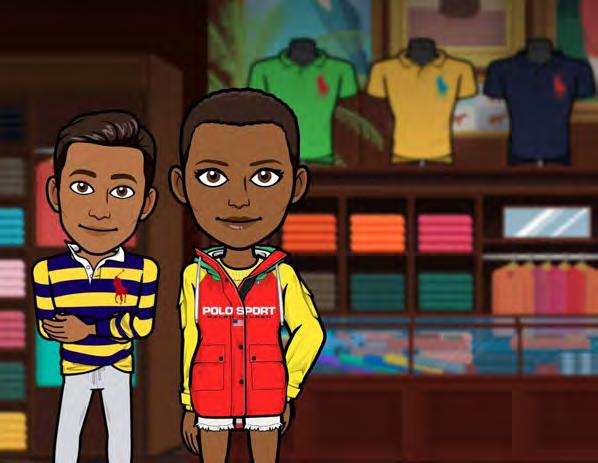
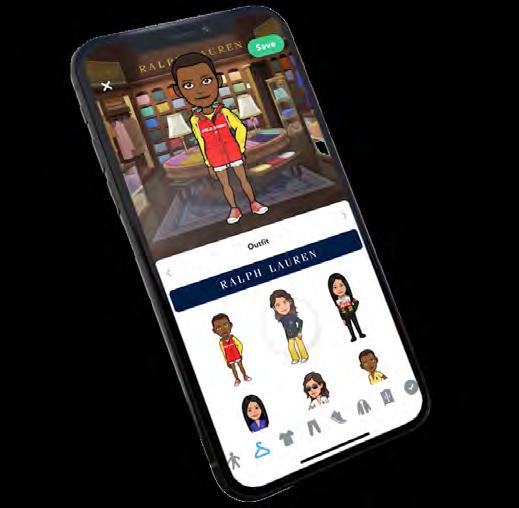
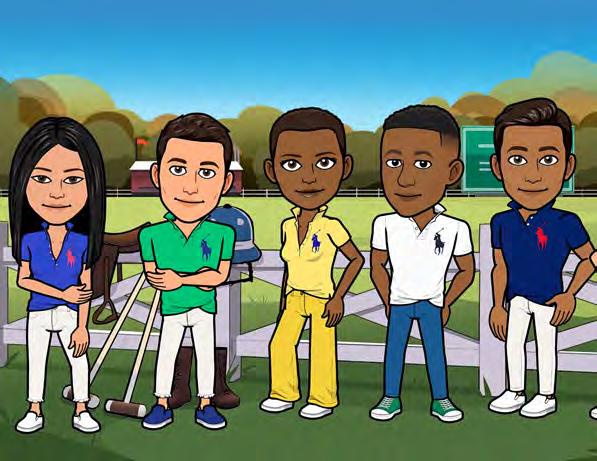

◀◁ Ralph Lauren launched a range of bitmojis to allow people to express their style virtually.

◀ An augmented reality billboard for the NBA celebrated the arrival of the Dallas Mavericks in Madrid and allowed passersby to put themselves in the team and on the billboard.
Web3 experiences can be inspiring, meaningful and uplifting, with the potential to make peoples’ lives different and fulfil needs that couldn’t be fulfilled elsewhere.
Transformative

“ It made my life better”
“ It was meaningful and inspiring”
“ The brand connected with me meaningfully”
“ It changed my life in some way”
“ I felt closer / more attached to the brand”

T is for Transformative
Web3 experiences also have the potential to change how people view, interact with, and collaborate with the brand involved, ultimately making them feel closer and more attached.
These kinds of transformative Web3 experiences typically involve a seamless transition between virtual and physical worlds. Indeed, a report by Wunderman Thompson revealed that two thirds of people believe the Metaverse will be ‘life changing’; on a more functional basis, another paper explained how people buy digital assets for their life-changing potential as investments (besides, of course, the more emotional elements discussed elsewhere).
“ W hat’s exciting to me is having that integration between a product that’s physical and a product that’s virtual, linking those two together, say with Apple’s Vision Pro headset, thinking about bringing the virtual and the immersive to our homes.”
S asha Wallinger
Web3 can be used to inspire people, fulfil fundamental psychological needs, and change behaviour, like for example using AR-based exposure therapy to treat cockroach phobia. At the extreme end, one motive for using these technologies is a transfer of consciousness to the machine. Ultimately, the key is augmentation of products, spaces, and the self, making the seamless merging of physical and virtual realms crucial.
Web3 can show people how products can impact their real life. As an illustration, tourist trips can be enhanced by using Web3 to virtually experience and expand upon them before visiting. This kind of augmentation and interaction can also lead to a feeling of psychological ownership.
From a psychological point of view, transformative experiences likely induce inspiration, which is an appetitive emotional state where new possibilities are revealed.
“ It’s about helping people to understand products in an interactive way that gets them excited as well about that product and gets them perhaps to understand the product in a deeper way than they could. ”
Henry Stuart
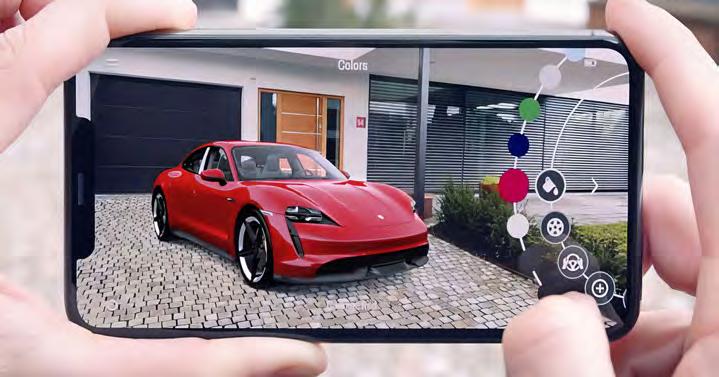
Transformative Bringing it to life
▶ A Marriott hotel in Madrid recreated itself as a digital twin, allowing people to step into the room and assess it before deciding to book.
Oceanic Experiences
Some experiences, typically spiritual, involve a sense of self-dissolution and feelings of transcendence, fusing with a target object or group. It is a process of ‘disrupt-then-reframe’.
“ You become a part of this ecosystem where you’re able to leave messages, vote, choose what colour they should release next season. So all of a sudden, it’s not just brands telling you what to buy. ”
Olivia Lee
▶ The Porsche Augmented Reality Visualiser allows people to see how what their driveway would look with the luxury car in it.


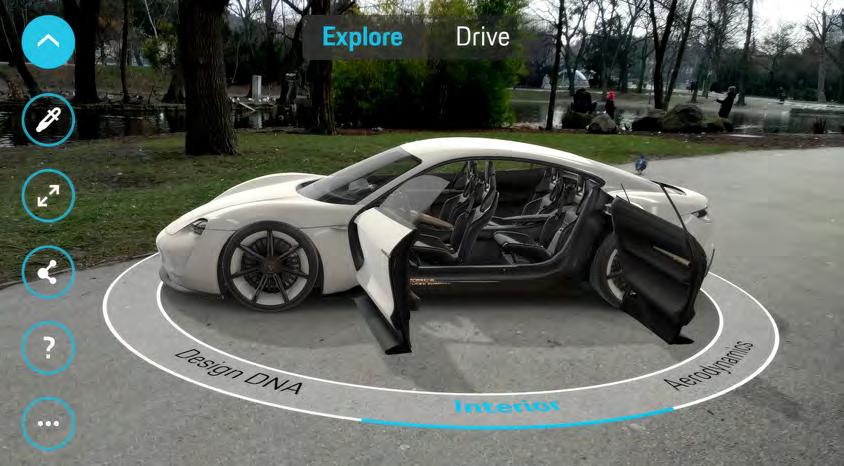






◀ Alo Yoga created the Alo Sanctuary in Roblox, a place for enhancing mindfulness and wellbeing.
“ The wow moments for me thus far have been around experiences that make me think about the world differently. There was one I did, one VR experience, which was a kind of a poem that unfolded around me in real time.”
Mark Lycett



More than many other media, Web3 offers brands a chance to speak to audiences authentically in their native habitat.
Accessible

“ It was accessible and easy to understand ” “ It was quick and easy to access”
“ It was trustworthy ”
“ It was simple to use”
“ It was a pleasant experience (not toxic)”

A is for Accessible
This factor is, in part, about being relevant, worthwhile, and more than just a gimmick – it’s about truly understanding the audience and the platform.
But more, Web3 experiences are successful when they are easy to understand and access, without any technical issues, and when they are comfortable, safe, and trustworthy.
Past explorations in this space have put a lot of emphasis on the limitations that need to be overcome, including technical barriers like connection speed, compatibility, or feeling sick while using it, as well as concerns about fraud, hacking, or addiction. Others have highlighted how toxic behaviour can be rife in virtual spaces. As one paper put it, it’s crucial for Web3 experience designers to ‘neutralise threats’, making sure content is properly aligned with the audience, the technology, the brand, and the physical space in which the experience takes place.
On the other hand, these platforms can bring people together like never before and include those who might otherwise not be able to access such an experience in real life. One academic paper called this ‘digital inclusivity’. When Web3 is used properly, however, it can of course improve the customer experience.
Psychology explains that, as well as motivations, overcoming barriers is a crucial element of behaviour change and habit formation. People also have a tendency towards uncertainty avoidance, preferring experiences that are easy, safe, and familiar. When perceptual fluency is high – that is, everything ‘clicks’ – an experience is better engaged with and better liked. On the other hand, when an experience is forced or inauthentic, users may show resistance and rebel against it.
“ The best way is when we don’t define it and we let it kind of happen in our everyday life. Starbucks have been excellent example. They didn’t really use the word NFTs. They probably just called it digital stamps.”
Olivia Lee
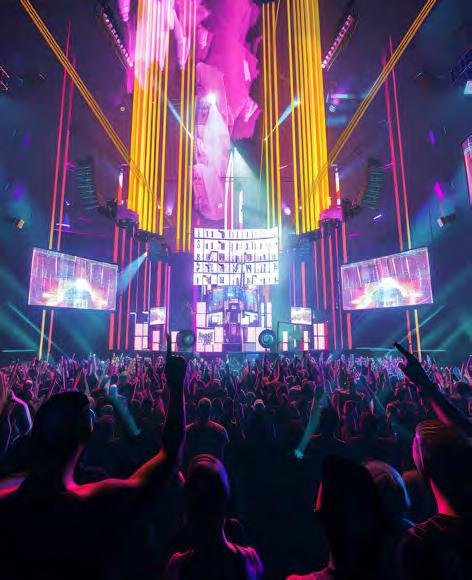
Accessible Bringing it to life
Expectation Confirmation Theory
Users go into an experience with hopes about quality, as well as basic expectations like being safe and easy to use, and the experience is judged against these as excellent, adequate or lacking.


“ It’s going to have to be seamlessly integrated into their phone, their watch, their car or their browser or what have you. They’re not going to work hard to do it.”
Will Jeffery
“ You need to just make sure it works really easily.”
Henry Stuart

▶ The Travis Scott concert in Fortnite opened an immersive musical event to the world from the comfort of their living rooms.


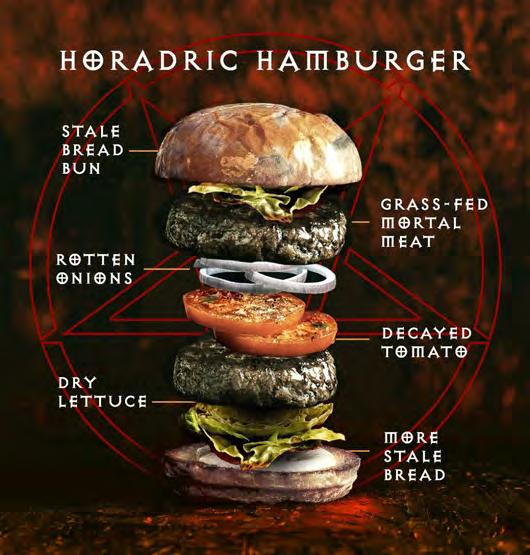
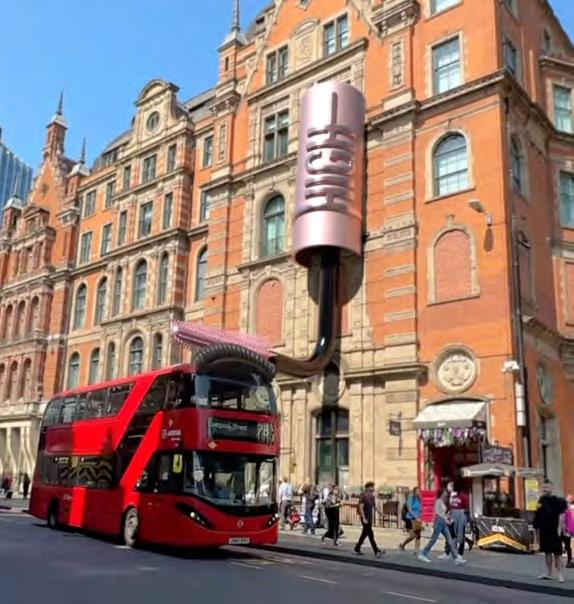

◀ Maybelline’s CGI fake OOH advert went viral, making a virtual experience highly accessible with no effort on the audience’s part.

◀ Burger King’s collaboration with Diablo IV perfectly understood its audience, resulting in an authentic experience that was more than just a gimmick.
Web3 experiences have a huge amount of potential for social and gamified interaction, fulfilling psychological needs like competency, relatedness, and self-esteem.
Gamified

“There was an element of competition”
“I bonded with people”
“It had game mechanics”
“I connected with people I like”
“It involved social interaction or collaboration”

G is for Gamified
There are broadly three elements here:
1 Engaging and fostering a sense of achievement
2 A shared experience and connecting with others
3 A bit silly or playful
Indeed, industry investigations have found that these kinds of platforms are used to connect with other people, and that there is an element of coolness, fear of missing out, and the bandwagon effect – it’s about getting there before everyone else.
Likewise, academic studies have highlighted the importance of gamification in Web3 platforms to drive interaction and thus engagement and brand outcomes. An important and well-studied principle impacting effectiveness is interactivity – that is, the ability to interact with, control, manipulate, and be involved in a platform, which can nourish engagement. Similarly, social presence is also an important feature of these platforms, which are often defined by extended social interactions.
Psychological research emphasises the importance of relatedness and belonging as a key motivation driving behaviour – people want to connect with others and feel part of a group. Yet the interactivity and gamification element of these experiences also fulfils the need for mastery and achievement, as users compete with others and master tasks.

Furthermore, interactivity keeps users engaged through the behavioural principle of operant conditioning and habit formation (e.g., rewards, triggers), sustaining a continuous ‘loop’ of engagement that keeps people coming back.
“ Those environments are, at the core, very social. In the same way as I used to get back from school, go on MSN, the same thing is happening there where people are just catching up on Roblox.”
Albane Prioux
▶ The Great Oreo Cookie Quest was the world’s first global, augmented-reality scavenger hunt.

The Generation Effect
Content is more engaging and memorable when it involves some kind of interaction and puzzle-solving on the user’s part, since this activates and forms richer and ‘stickier’ connections in memory.
“ It’s super engaging, it’s entertaining, and it brings people together in a unique way. The social aspect for Web3 is the foundation of why everyone is so excited about it, because you can get such scaledup participation and if the experience is good then it can spread like wildfire.”
Joe Hills


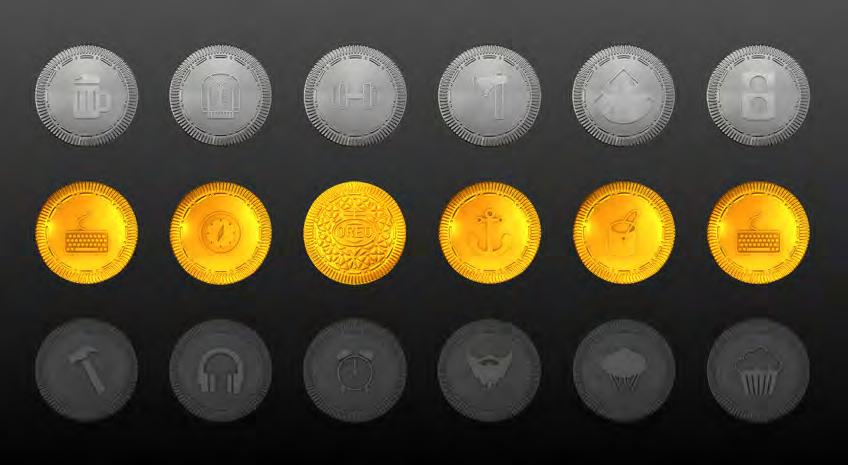


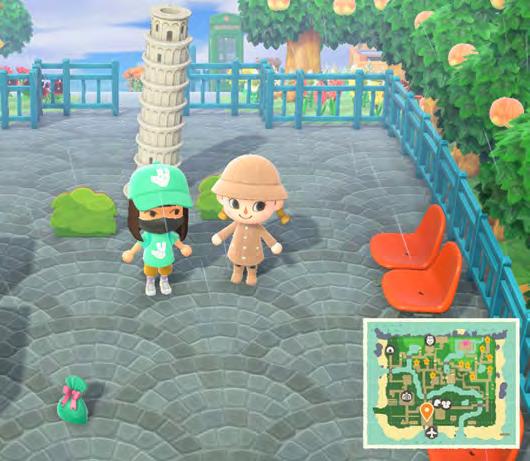
◀ Tommy Hilfiger’s TOMMY PLAY in Roblox is a space for people to build a community, socialise, and play, with regular expansions and collaborations.
“ Looking to the gaming world, you’re getting a good understanding of how peoples’ attention is kept for an excessively long time, because people are able to compete against themselves, compete against others.”
Charlotte Bunyan

◀ Deliveroo delivered virtual snacks to players within the social simulation game Animal Crossing.
Web3 allows people to break free from the physical constraints of reality, unbound only by imagination.
Extraordinary

“ It was full of wonder and surprise”
“ I saw fantastical things I’d never seen before”
“ It was unique, unusual, or different ”
“ It was full of surprising little touches”
“ It transported me into a different state of being ”

E is for Extraordinary
These experiences can be entirely new and visceral, allowing people to escape the humdrum of daily life and feel free; to explore an entirely new world.
This makes for experiences that are entertaining and fully immersive, as well as special, intriguing, and worth boasting about to other people. Industry reports have highlighted how these experiences offer a chance for exploration; they can take users to another world, a borderless utopia with a sense of wonder and endless possibility.
They can be immersive experiences where people can escape reality and let go, so much so they can even enter an ‘NPC’ state of unthinking bliss. Academic research has highlighted the importance of entertainment, escapism, immersion, vividness, flow, and the so-called wow effect in Web3 type experiences. They can induce a sense of awe –defined as wonder and amazement at a sense of vastness and a change in one’s ordinary frame of reference – resulting even in goosebumps. Importantly, ‘the medium is the message’ somewhat, since the technology is new for many, producing curiosity that drives engagement.
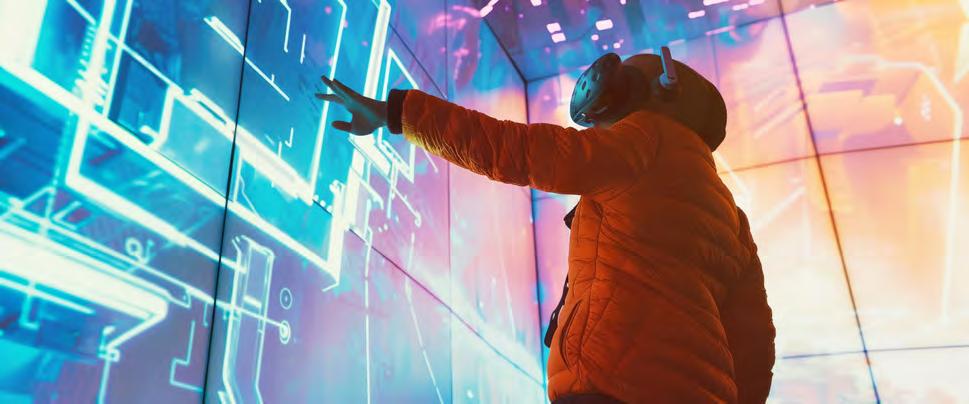
Many psychological principles explain why extraordinary Web3 experiences are effective. The novelty bias refers to our tendency to pay more attention to, and to prefer, things that are new, while curiosity similarly highlights our need to close gaps in our understanding and ‘figure out’ stimuli that are unusual or distinct; we may also feel a sense of urgency to participate when something is exclusive. Experiences will be more engaging when they activate multiple modalities, and when they activate ‘flow’, that is, being completely immersed and focused.
“ You can feel that moment of wonder and of surprise because it isn’t real. It’s a little like Charlie and the Chocolate Factory - fantastical things that don’t exist in real life and yet you were able to experience.”
Charlotte Bunyan
Extraordinary Bringing it to life
“ In Web3 you have a complete blank slate. You’re not limited by the postcode or nation that people live in. Imagine
just an entirely white box which you could stand in the middle of and
you can make that whatever you want it to be.”
Joe Hills

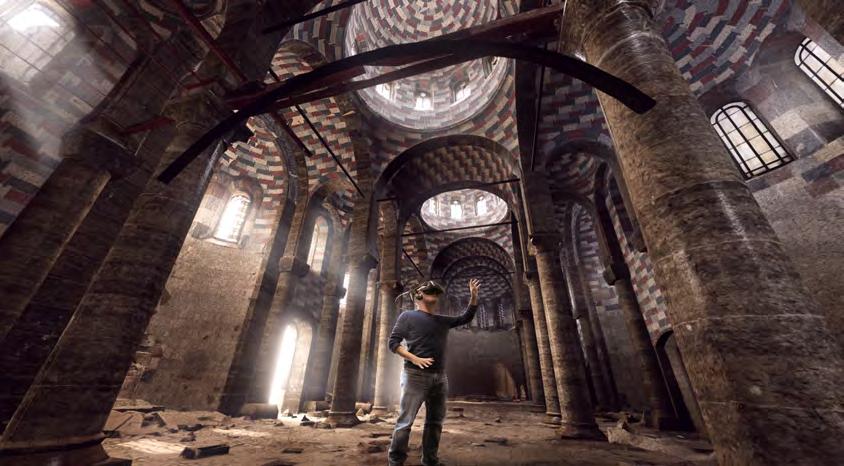
Exploratory Preferences
Research suggests that imaginary and virtual worlds are so popular because they provide people with the opportunity to discover, explore and pioneer that is lacking in the globalised real world.
▶ Assassin’s Creed developer Ubisoft collaborated with the Smithsonian, using VR to allow people to experience historic sites which are no longer standing.
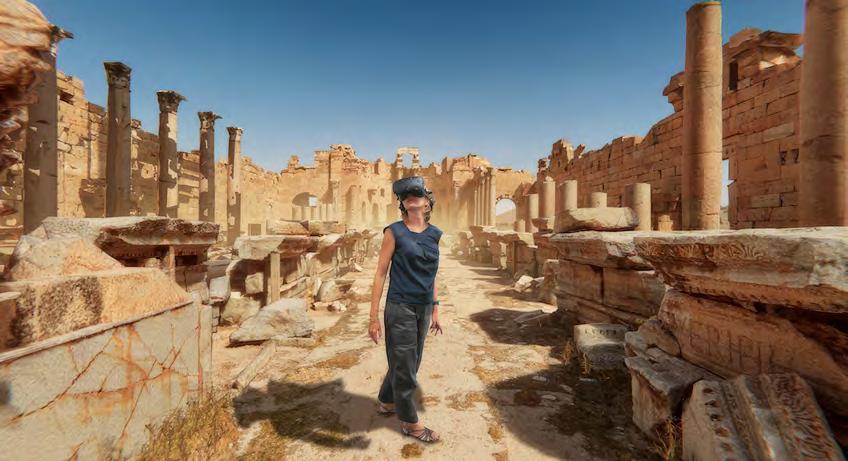
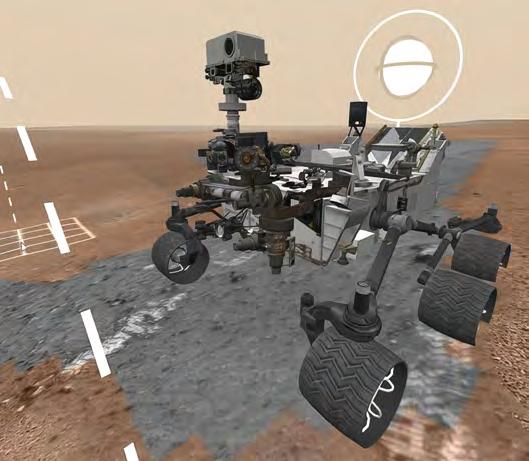

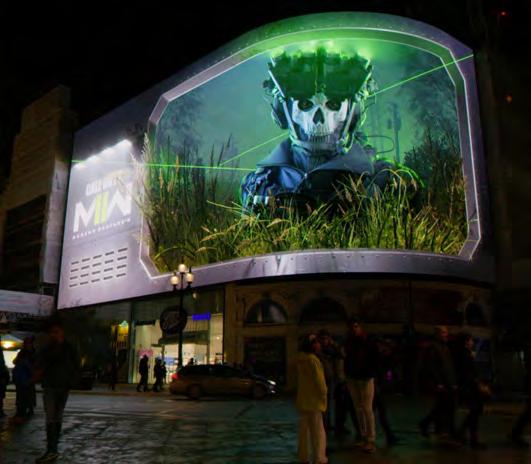

◀ NASA’s Access Mars VR project lets ordinary people walk on the face of another planet.

“ It’s like a never-ending amount of experiences and new things to discover. It’s an ever-evolving space, which makes it incredibly exciting and never boring.”
Albane Prioux
◀ Anamorphic (3D) billboards, like these for Call of Duty: Modern Warfare, and Nike transform public spaces into awe-inspiring spectacles.
What matters most?
Through our literature review and expert interviews, we identified several objectives for Web3 activations, which we put into the survey; factor analysis identified three main outcomes.
Brand
A change in perceptions and intentions for the brand
Action
Clicking, buying, sharing, or giving feedback
Reach
Getting headlines; reaching a mass or specific audience

Every Web3 activation will have different objectives. The STAGE levers to pull depends on what you want to achieve – made clear via three linear regressions (use the STAGE variables to predict each of the above three success measures).
To transform brand perceptions, it should of course be Transformative, and to a lesser extent, Accessible and Extraordinary.
To incite short-term action, the game mechanics of Gamified and Transformative are most important (while being Accessible necessarily requires less work on the audience’s part).
And to achieve reach, an experience should incorporate the fun, awe-inspiring combination of Gamified and Extraordinary.
Types of experience

We asked participants which of eight Web3 experiences they had experienced recently, and then quizzed them on one of their choices at random.
A Metaverse or mobile game tends to score higher on being Gamified (though mobile experiences score lower in general on all fronts).
Events, whether partially or totally virtual, are more Transformative, and digital assets/ collectibles are transformative too.
Ways of expressing one’s virtual identity or ‘trying things out’ using AR on one’s personal device activate the Self dimension.
Unsurprisingly, AR, VR, and Metaverse experiences are more Extraordinary.
Normalised (0-1) level of each lever for…
Game in the metaverse
Metaverse world/ store/concert Digital asset/collectible
Way of expressing one’s virtual identity
Mobile game / scavenger hunt
Types of experience
We surveyed participants on several aspects of their Web3 experience beyond the STAGE levers, including the medium used, how virtual it was, who they were with, and so on. We used these more descriptive variables in a k-means cluster analysis, finding four ‘types’ of Web3 experience.

Casual
These experiences don’t really involve the audience; they are simple, relaxed, and passive. They tend to happen on smartphones as part of peoples’ daily lives, perhaps as a way of expressing their virtual identity (e.g., filters). Out of these four clusters, this one scores the lowest on all success metrics, but perhaps what it does best is drive immediate action for the brand.

Practical
These experiences are quite functional. Typically, they involve AR on a personal device, or a branded game in the Metaverse, in a private, solitary capacity at home. They focus heavily on the individual and are targeted at a niche audience; these experiences focus on the Self, putting users in control. The result tends to be a change in brand perceptions.
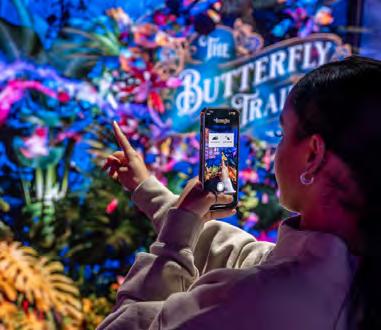
Spectacular
These experiences are exciting, emotional and well-liked; they are cool and make good use of technology blending physical with virtual. They are much more likely to happen in a social, public setting, reaching a mass audience on a public screen or at an event. They are Extraordinary, Gamified, and Transformative, and ultimately shift the needle very well on all three measures of success.
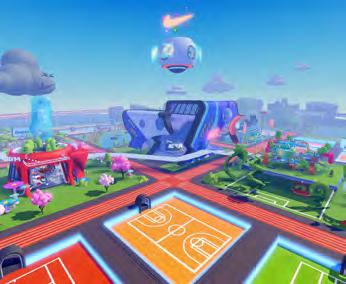
Gamified
These experiences are consumed at home, in private, on a smartphone or console. They are more virtual than physical and they to involve games (either mobile or Metaverse) and skins. They are an active, extended experience where people spend a lot of time and often return. They pull the Gamified and Self levers and perform best on reach.


References
Adams, J. S., & Freedman, S. (1976)
Andersen, I. N. S. K., Kraus, A. A., Ritz, C., & Bredie, W. L. (2019)
Bargh, J. A. (1982)
Barhorst, J. B., McLean, G., Shah, E., & Mack, R. (2021)
Barrett, K. C., & Morgan, G. A. (2018)
Belk, R. W. (2013)
Botella, C., Bretón-López, J., Quero, S., Baños, R., & García-Palacios, A. (2010)
Böttger, T., Rudolph, T., Evanschitzky, H., & Pfrang, T. (2017)
Buhalis, D., Lin, M. S., & Leung, D. (2022)
Carrozzi, A., Chylinski, M., Heller, J., Hilken, T., Keeling, D. I., & de Ruyter, K. (2019)
Chen, Y., & Lin, C. A. (2022)
Dazed Studio (2022)
Deci, E. L., & Ryan, R. M. (2012)
De Gauquier, L., Brengman, M., Willems, K., & Van Kerrebroeck, H. (2019)
Dubourg, E., Thouzeau, V., de Dampierre, C., & Baumard, N. (2021)
Du, Z., Liu, J., & Wang, T. (2022)
Eyal, N. (2014)
Hilken, T., de Ruyter, K., Chylinski, M., Mahr, D., & Keeling, D. I. (2017)
Hinsch, C., Felix, R., & Rauschnabel, P. A. (2020)
Hong, D., & Cho, C. H. (2023)
Hossain, M. A., & Quaddus, M. (2012)
Javornik, A. (2016)
Jessen, A., Hilken, T., Chylinski, M., Mahr, D., Heller, J., Keeling, D. I., & de Ruyter, K. (2020)
Kim, J. (2021)
Leary, M. R., & Kelly, K. M. (2009)
Loewenstein, G. (1994)
Liu, Z., Xiang, Y., Shi, J., Gao, P., Wang, H., Xiao, X., ... & Hu, Y. C. (2021)
Lu, S., & Mintz, O. (2023)
Mittone, L., & Savadori, L. (2009)
Moravec, H. (1998)
Murray, A., Kim, D., & Combs, J. (2023)
Nikolaou, A., Schwabe, A., & Boomgaarden, H. (2022)
Oakes, P., & Turner, J. C. (1986)
Oppenheimer, D. M. (2008)
Paivio, A. (1991)
Park, M., & Yoo, J. (2020)
Poushneh, A., & VasquezParraga, A. Z. (2017)
Quesnel, D., & Riecke, B. E. (2018)
Rains, S. A. (2013)
Rapp, J. K., Bernardi, R. A., & Bosco, S. M. (2010)
Ratan, R., Beyea, D., Li, B. J., & Graciano, L. (2020)
Rathore, B. (2018)
Rauschnabel, P. A. (2018)
Rauschnabel, P. A., Felix, R., & Hinsch, C. (2019)
Rauschnabel, P. A., Rossmann, A., & tom Dieck, M. C. (2017)
Schmautz, B., Fuchshuber, J., Andres, D., Prandstätter, T., Roithmeier, L., Freund, A., & Unterrainer, H. F. (2024)
Scholz, J., & Duffy, K. (2018)
Scholz, J., & Smith, A. N. (2016)
Slamecka, N. J., & Graf, P. (1978)
Smart, J., Cascio, J., & Paffendorf, J. (2007)
Staddon, J. E., & Cerutti, D. T. (2003)
Sung, E. C. (2021)
Swann, C., Keegan, R. J., Piggott, D., & Crust, L. (2012)
Tajfel, H., & Turner, J. C. (2004)
The Digital Fairy (2023)
Tyler, T. R. (1989)
Virtue (2022)
Willmott, T. J., Pang, B., & Rundle-Thiele, S. (2021).
Wunderman Thompson (2021 & 2022)
Yang, S., Carlson, J. R., & Chen, S. (2020)
Ying, T., Tang, J., Ye, S., Tan, X., & Wei, W. (2022)
YouGov (2022)
Yim, M. Y. C., & Park, S. Y. (2019)
Zanger, V., Meißner, M., & Rauschnabel, P. A. (2022)




